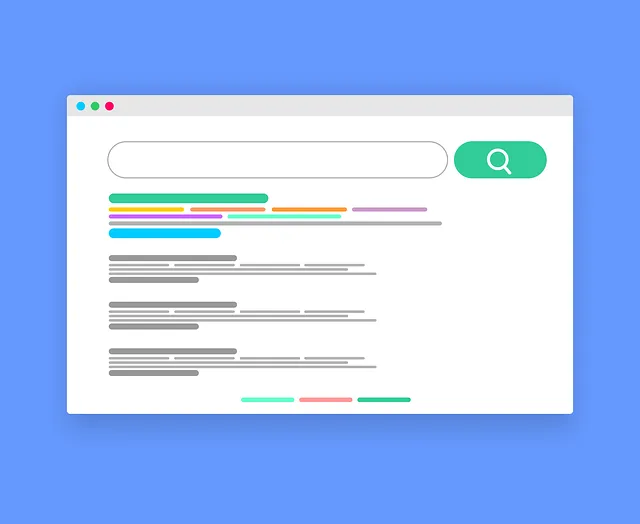Implementing DIY SEO Schema using the `HowTo` markup, particularly with JSON-LD, enhances website content visibility and user experience. By structuring step-by-step guides as rich results, including images and detailed instructions, websites attract users and improve search rankings. This strategy boosts click-through rates, increases engagement, and makes content more accessible to both users and search engines. Best practices involve clear step definitions, keyword optimization, visual elements with alt text, and proper HowTo JSON-LD implementation for better interpretation and display in search results. Measuring success through metrics like CTRs and average position helps refine the approach and ensure your DIY SEO Schema content stands out.
“Unleash the power of structured data for your step-by-step content! This article explores the transformative potential of the HowTo schema in enhancing your website’s visibility on search engines. We delve into the fundamentals of DIY SEO Schema, highlighting its significance for engaging users with clear instructions. Through a comprehensive guide, we’ll walk you through implementing the markup, incorporating images, and providing contextual clues that boost your content’s performance. Learn best practices to optimize search results and discover how to track the success of your schema markup efforts.”
- Understanding DIY SEO Schema: The Basics
- Why Use HowTo Schema for Step-by-Step Content?
- Implementing HowTo Schema Markup: A Step-by-Step Guide
- Enhancing Display with Images and Context
- Best Practices for Optimal Search Result Placement
- Measuring Success: Tracking Schema Markup Performance
Understanding DIY SEO Schema: The Basics

Understanding DIY SEO Schema: The Basics
In today’s digital era, optimizing content for search engines isn’t just about crafting compelling copy; it involves structuring data in a way that enhances user experience and drives traffic. This is where DIY SEO Schema comes into play. A core component of Search Engine Optimization (SEO), the HowTo schema enables search engines to better understand and display your content, particularly step-by-step guides and tutorials. By marking up your website with this structured data, you’re essentially creating a rich result for users seeking specific instructions or solutions.
Imagine when someone searches for “how to bake a cake.” With DIY SEO Schema, your website can provide not just text but also images, ingredients lists, and step-by-step instructions, all presented in an engaging, digestible format. This visual enhancement captures the user’s attention more effectively than plain text, encouraging them to click through to your site for a more detailed guide. Moreover, using JSON-LD for HowTo implementation ensures that search engines can easily parse and interpret your content, potentially leading to improved rankings and increased visibility in search results.
Why Use HowTo Schema for Step-by-Step Content?

Using DIY SEO Schema’s HowTo markup is a game-changer for presenting step-by-step content, ensuring your website stands out in search results. It offers a structured way to describe tasks or tutorials, enhancing user experience and engagement. With this schema, search engines can accurately interpret and display your instructions as rich results, complete with images and contextual clues.
This markup is particularly useful for educational websites, blogs, or e-commerce sites offering DIY guides. By implementing HowTo JSON-LD or Tutorial Schema Markup, you enable search engines to index your content more effectively, leading to improved click-through rates and higher rankings. It provides a clear hierarchy of steps, making it easier for users to follow instructions and complete tasks, ultimately fostering better user interaction and satisfaction.
Implementing HowTo Schema Markup: A Step-by-Step Guide

Implementing DIY SEO Schema using HowTo markup is a straightforward process that can significantly enhance your website’s visibility in search results. Start by identifying the step-by-step nature of your content. Ensure each step is clear and actionable, as this will directly translate to better user experience and potential for engagement.
Next, structure your content using the `HowTo` schema type in JSON-LD format. Begin with the `@context` property, setting it to `”https://schema.org”`. Then, specify the `@type` as `”HowTo”` followed by a detailed description of your tutorial. Each step should be represented as an `itemListElement`, containing a `text` describing the action and potentially an `image` for visual aids. Remember, rich results like enhanced search snippets are more likely to capture users’ attention, driving higher click-through rates.
Enhancing Display with Images and Context

Incorporating images and providing instructional context alongside structured data is a game-changer in SEO, especially when utilizing the HowTo schema. When it comes to DIY projects or step-by-step guides, visual elements and descriptive content work together to capture users’ attention and significantly enhance search result displays. Each image can be marked up with relevant alt text and HowTo schema properties, offering search engines a comprehensive understanding of the guide’s contents. This multi-faceted approach ensures that not only are the right keywords captured but also that the displayed snippet in search results is visually appealing and informative.
The combination of HowTo JSON-LD and rich image metadata allows for a more engaging user experience. For instance, when someone searches for a specific tutorial, the enhanced display might show an overview image from the guide, accompanied by a clear title, a brief description, and even some step-by-step highlights. This strategy not only drives click-through rates but also fosters better engagement once users arrive at the content, as they can quickly grasp what to expect from the guide thanks to the Schema for Guides implementation.
Best Practices for Optimal Search Result Placement

To maximize the visibility of your step-by-step content in search results, adopt best practices that leverage DIY SEO Schema effectively. Begin by ensuring each step is clearly defined and concise, making it easy for both users and search engines to understand the process. Incorporate relevant keywords naturally throughout the description, focusing on terms that potential readers might use when searching for similar instructions.
Implementing rich visual elements like images or videos at strategic points can significantly enhance the user experience. Include alt text for each image, optimizing it with targeted keywords to improve accessibility and SEO. For instance, using HowTo JSON-LD schema correctly allows search engines to interpret your content as a comprehensive instructional ‘rich result’, boosting its placement in relevant queries. This structured data marking, including proper HowTo SEO Tagging, can set your content apart from competitors, making it more likely to be displayed prominently in search engine results pages.
Measuring Success: Tracking Schema Markup Performance

Measuring success is a vital step in understanding the impact and effectiveness of your DIY SEO Schema implementation. By tracking the performance of your schema markup, you gain valuable insights into how search engines interpret and display your content. One way to gauge success is by analyzing rich results for HowTo content. These enhanced display results, often featuring images and detailed instructions, can significantly improve click-through rates (CTRs) and user engagement.
Using tools provided by search engines or third-party analytics platforms, you can monitor the visibility of your schema markup in search results over time. Evaluate key metrics such as CTRs, average position, and conversion rates to assess how well your HowTo JSON-LD or other SEO tagging strategies are performing. By identifying trends and areas for improvement, you can continuously refine your approach, ensuring that your content stands out and meets the expectations of users searching for step-by-step instructions with visual aids.
